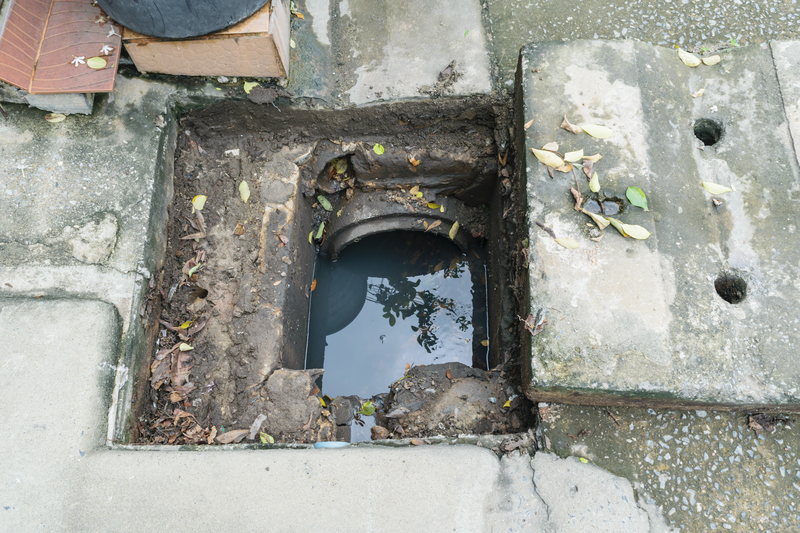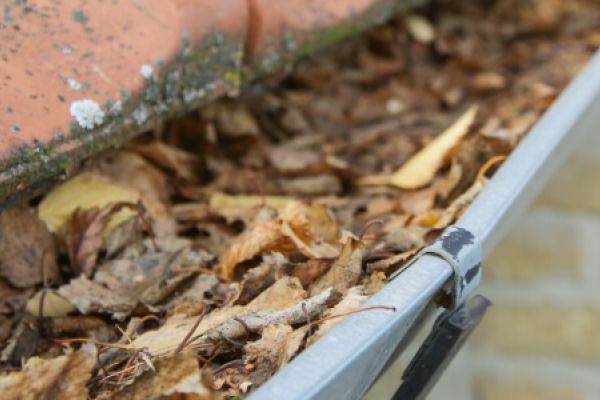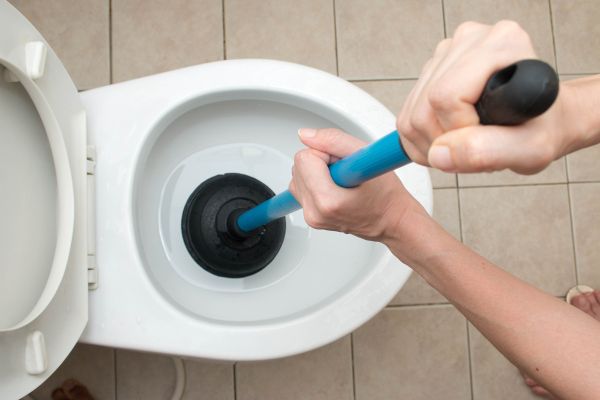In this article
How to tell if an outside drain is blocked?
Outdoor drains help to protect our properties against water damage by channelling rainwater and runoff away from buildings. However, when these drains become blocked, the consequences can be severe.
Identifying the early warning signs of a blocked outdoor drain is key to preventing potential structural damage and ensuring a clean and safe environment.
In this article, we'll run through the indicators that can help you detect whether your outside drain is starting to become blocked. By being proactive, you can often clear blockages before they cause real damage, avoiding costly repairs and reducing the risk of water-related structural issues.
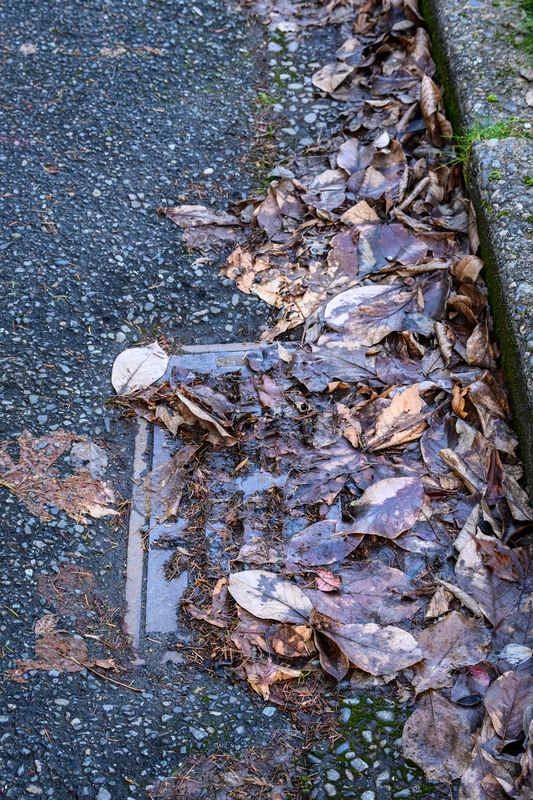
How can you tell if you have blocked outside drain?
There are many ways you can tell if you have a blocked outside drain. Some indicators may not be as simple as you think. Let's look at some of the most common signs for a blocked drain.
Signs of an Outside Drain Blockage
1. Slow Drainage
When water drains away slowly from outdoor drains, it's often a sign of a potential blockage. This slow drainage can manifest in various forms, such as water pooling around the drain area or a gradual decrease in the rate at which water empties from the surface.
This warning sign suggests that an obstruction may reduce water flow through the drain system, whether due to debris buildup, root intrusion, or other factors. Addressing this issue promptly is crucial to prevent further complications, such as flooding, water damage, or structural problems.
2. Gurgling Sounds
Unusual gurgling noises emanating from outdoor drains can serve as a crucial indication of a potential blockage within the plumbing system. These sounds often signify a disruption in the normal flow of water and air through the drains, which can be caused by various factors such as debris accumulation, root intrusion, or clogged vent pipes.
When water flow is hindered due to a blockage, it restricts air passage, resulting in air pockets or bubbles that produce a distinct gurgling noise as they attempt to pass through the trapped water.
These gurgling sounds should not be overlooked, as they may point to underlying issues that require attention to prevent further complications. Addressing the potential blockage promptly can help avoid drainage problems, backups, and related plumbing issues that may arise if left unattended.
3. Water Backups
Water backing up from outdoor drains, especially during or after rain, is a clear signal of a potential blockage issue within the drainage system. When outdoor drains are obstructed, water cannot flow freely through the pipes, leading to a buildup of water within the system. During or after rainfall, the increased volume of water adds pressure to the drainage system, exacerbating the effects of any existing blockages. This can result in water backing up through outdoor drains, pooling around the drain openings, or severe flooding.
This warning sign necessitates immediate attention to identify and address the underlying cause of the blockage. Failure to resolve the issue promptly can lead to significant water damage, structural issues, and further complications within the drainage and plumbing systems.
4. Foul Smells
The presence of unpleasant odours around outdoor drains strongly indicates potential blockage and stagnant water accumulation within the drainage system. These odours, often characterised by foul or sewage-like smells, can permeate the surrounding outdoor space and even make their way into indoor areas. The causes of such odours can be multifaceted, including bacterial buildup, dry P-traps, clogged vent pipes, and sewage gas accumulation due to blockages.
Identifying and addressing the root cause of these unpleasant odours is crucial to prevent further complications such as drainage issues, backups, and potential health hazards associated with exposure to sewage gases. Prompt action to clear blockages and ensure proper drainage flow is essential in mitigating the impact of these odours on both outdoor and indoor environments.
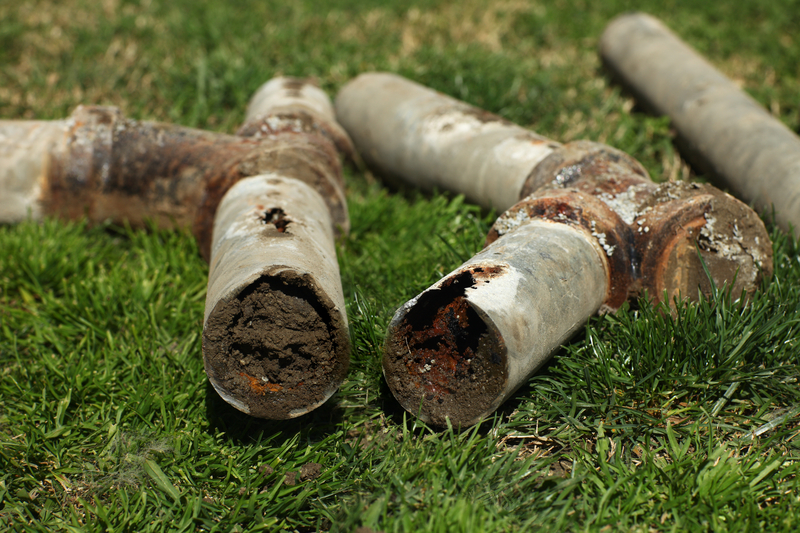
5. Water Pooling
Observing water pooling around outdoor drains is important as it often indicates a potential blockage that prevents proper drainage. This pooling can manifest in various areas, such as the yard, patio, or landscape beds, and it serves as a visible indicator of underlying drainage issues. Standing water poses a risk of damage to infrastructure, such as concrete, pavers, and flat roofs, but also suggests that water is not flowing away as intended.
Identifying the significance of water pooling can prompt proactive measures to address potential blockages and ensure adequate drainage. By recognising this warning sign, property owners can prevent further complications, such as flooding, water damage, and environmental impact, ultimately preserving the integrity of their outdoor spaces and drainage systems.
6. Unusual Water Levels
If the water in your sinks, toilets, or showers is draining away slowly or reaching higher levels than expected, this often indicates a potential blockage in the system. These signs can be early warnings of a partial or complete obstruction in the pipes, leading to restricted water flow and improper drainage.
Although these are often caused by blockages around the sinks and showers, they can also be caused by blockages much deeper in the system. Slow draining or rising water levels can point to deeper issues, such as the build up of debris, minerals, grease, or even tree root intrusions in the outside drains.
Recognising these implications is crucial as it signals the need for timely intervention to prevent further complications. Ignoring these warning signs could lead to complete blockages, potential water damage, sewage backups, and health hazards. Addressing these issues promptly ensures the proper functioning of the plumbing system and helps maintain a healthy and safe indoor environment.
7. Sewer Smell
The presence of a sewer-like smell near outdoor drains strongly indicates a potential blockage within the sewer drain. This unpleasant odour often arises from the accumulation of organic matter, debris, or stagnant water within the outside drains. These blockages can lead to the generation of hydrogen sulfide gas, resulting in the characteristic rotten egg or sewer-like smell.
If you notice these smells, act fast as it signals the need for immediate attention to unblock the outside drains. Ignoring this warning sign could lead to complete blockages, potential health hazards, and environmental issues. Addressing these concerns promptly ensures proper functioning of the drainage system and contributes to maintaining a clean and healthy outdoor environment.
Initial Steps for Addressing Blockages
When unblocking drains, the initial do-it-yourself (DIY) approaches can be effective in resolving minor obstructions. These methods aim to address visible debris and use mechanical tools to clear the blockage without professional intervention.
- Removing Visible Debris: Start by cautiously removing any visible debris or foreign objects from the drain opening. This can include hair, soap scum, food particles, or any other buildup that is easily accessible. Use gloves and appropriate tools to safely clear the debris without causing damage to the pipes.
- Mechanical Methods: Utilise drain rods or augers to mechanically dislodge the blockage within the pipes. Drain rods can be inserted into the drain to push through and break up obstructions, while augers are designed to hook onto and remove clogs such as hair or solid waste.
These initial DIY approaches are suitable for minor drain blockages and can often resolve issues without the need for professional assistance. However, if the blockage persists or appears to be more complex, seeking the help of a qualified plumber may be necessary.
Importance of Professional Assessment
If DIY efforts to clear drain blockages prove ineffective or if any warning signs persist, it is vital to seek professional drain unblocking services. Persisting blockages and sewer-like odours may indicate more complex issues within the outdoor drainage system that require specialised expertise and equipment to address effectively. Professional plumbers possess the knowledge, experience, and specialised tools necessary to tackle complex blockage issues within the outdoor drainage system.
Here's why seeking their assistance is crucial:
Expertise and Experience
Drain cleaning services have in-depth knowledge of plumbing systems and drain pipes and extensive experience in dealing with various types of blockages. Specialists can accurately diagnose the root cause of the issue and implement targeted solutions.
Specialised Tools and Equipment
Plumbers can access specialised tools and equipment designed for diagnosing and resolving complex blockages. This includes high-pressure water jetting equipment, inspection cameras, and advanced drain cleaning tools not typically available for DIY use.
Comprehensive Solutions
Professional plumbers can provide comprehensive solutions that address the immediate blockage and underlying issues such as damaged pipes, root intrusions, or improper drainage system design. A drain cleaning service can be offered to ensure the longevity of drain clearance, making your problem a long fix, not a quick fix.
Safety and Compliance
A professional drainage engineer will adhere to safety standards and regulations, ensuring that the repair or maintenance of clogged drain work is conducted safely and in compliance with local codes.
Things to remember
Identifying and addressing potential blockages within the outside drainage system is critical for maintaining optimal functionality and preventing structural damage. By taking proactive measures, property owners can safeguard against various issues and ensure the smooth operation of their drainage infrastructure.
- Preventing Structural Damage: Timely intervention can prevent potential structural damage to the property, including foundation erosion, water pooling, and soil instability caused by unaddressed drainage blockages.
- Preserving Property Value: Maintaining a properly functioning drainage system contributes to the overall value and integrity of the property, making it essential for long-term preservation.
- Avoiding Health Hazards: Unresolved drainage blockages can lead to standing water, mould growth, and unpleasant odours, posing health hazards to inhabitants. Timely resolution mitigates these risks.
- Optimising Drainage Efficiency: Proactive identification and clearance of blockages optimise the efficiency of the drainage system, reducing the likelihood of future issues and minimising the need for costly repairs.
By recognising the criticality of promptly addressing potential drain blocked outside, you can uphold their property's integrity and mitigate drainage-related problems' impact.
Finally
Here at Cotswolds Drainage, we are here to help with your drain unblocking needs. With our advanced drain unblocking equipment and team of drain unblocking specialists, we are here to fix your drain blockages. Contact us today with any queries, and we will get your drain properly running again in no time!
Get in touch
Contact our friendly and professional team via form, phone or email for any drainage issues you may have.
From blocked drains to septic tank repairs and replacements, we're here to help. We have over 25 years of experience and offer 24/7 emergency callouts.
-
01386 882324
-
WhatsApp
-
This email address is being protected from spambots. You need JavaScript enabled to view it. -
See what our customers think
